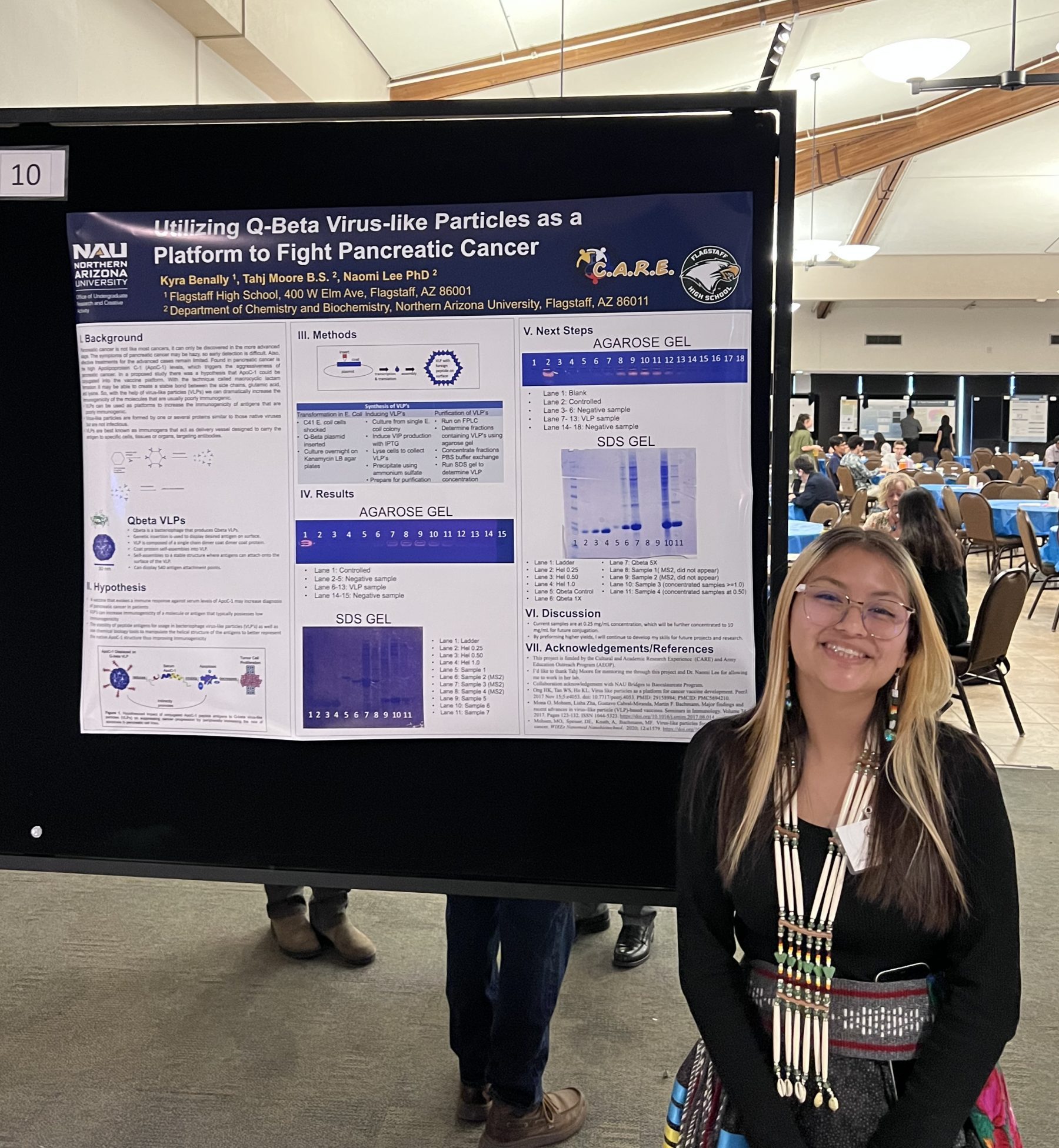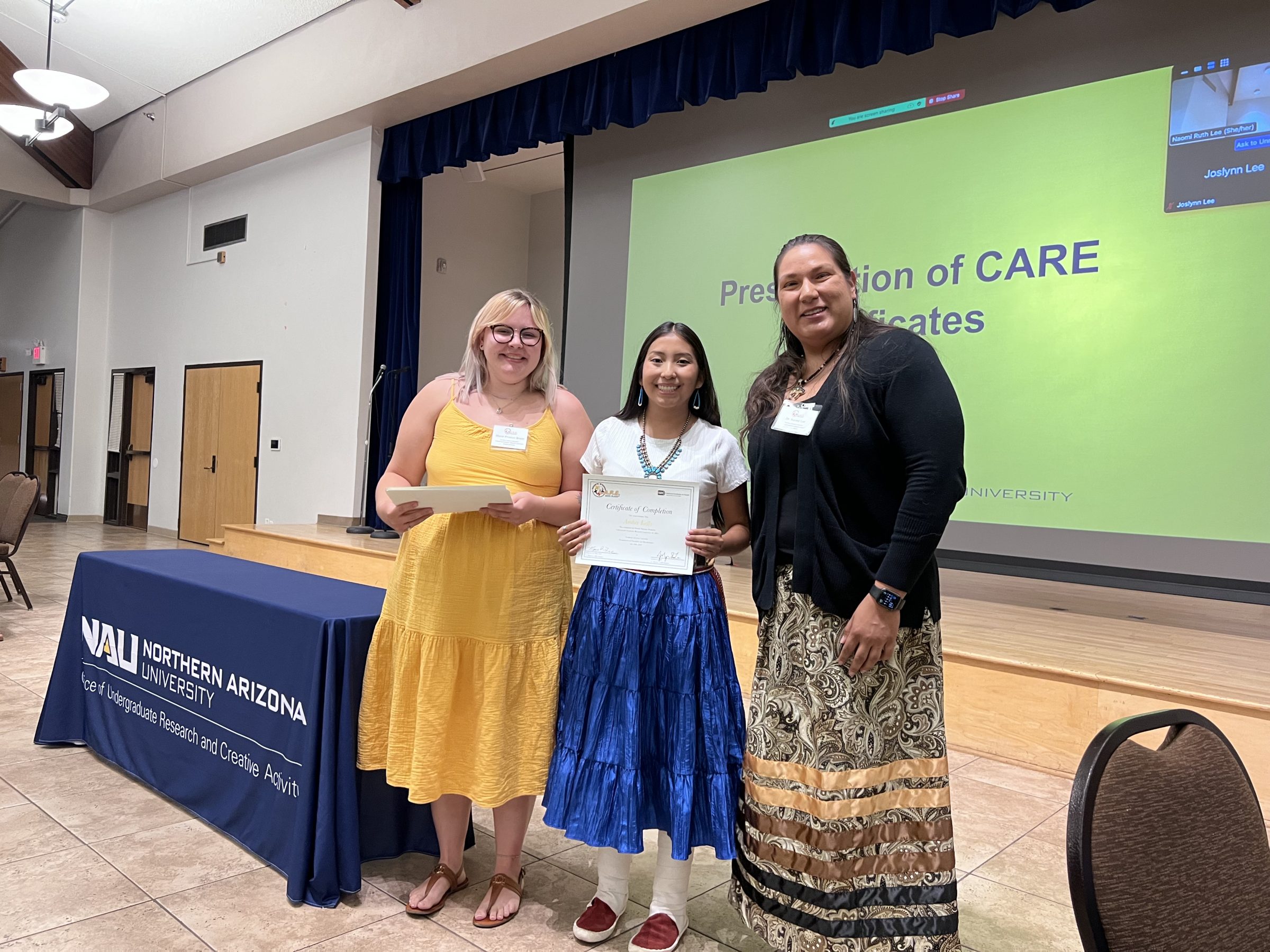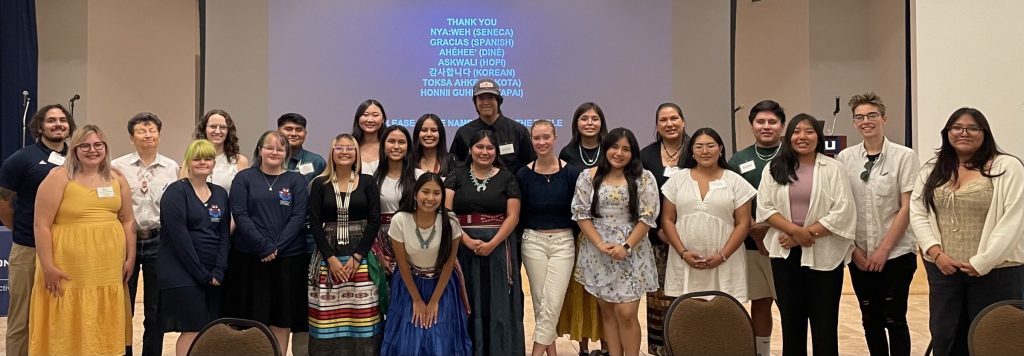For many high school students, dreams of curing devastating illnesses, discovering new species and designing revolutionary technology are hindered by limited resources and systemic inequality. NAU’s Cultural and Academic Research Experience (CARE) program aims to ensure these students get opportunities for hands-on laboratory training, unique research projects and avenues to share their work more broadly.
Since its inception, CARE has made authentic laboratory procedures, enlightening mentor relationships and making the independence of university life more accessible for Native American and other underrepresented high school students.
Every summer, CARE participants partner with NAU faculty researchers to complete an in-depth research project tailored to their academic interests. The project culminates in a closing ceremony where students can reflect on their achievements and present their findings. At the program’s end, many students make plans to return the following summer, continue their work throughout the academic year or jump into higher education.
Ten students participating in the CARE 2024 summer program started their freshman year at NAU last month, including two who are making astonishing advancements in biology and psychology. Read on to learn how these students discovered the CARE program, how they spent their summers and what they plan to do with their newfound scientific expertise in the coming years.
Together in harmony
Freshman Kyra Benally has made the most of her education since high school.
From juggling her responsibilities as a Flagstaff High School student with an additional 36 college credit hours to proudly serving as her school’s Native American Club coordinator, Benally was determined to honor the indispensable experiences given to her and eventually prove her dedication to science, specifically psychology.
Her appreciation for the human mind stemmed from her great-grandfather, who used to say one must nurture both their physical brain and their intangible mind to truly flourish. Diving deeper into the subject in her junior year of high school, she quickly became engrossed in the CARE program’s spring and summer workshops.

“I fell in love with learning how the heart and brain worked together in harmony to create the thoughts in your mind and a healthy body,” Benally said. “In the traditional Navajo way, we are taught that your good thoughts will reflect on your body’s well-being, so the combination of the two organs functioning in a physical and spiritual aspect blossomed my passion for learning about them scientifically.”
During this summer’s research program, Benally worked with Department of Psychological Sciences assistant professor Tara Bautista to investigate how the mind influences the use of a substance often synonymous with the college experience: marijuana.
Forty-four percent of college students reported using cannabis in 2020, up from 38% in 2015. In an attempt to quantify why college students develop marijuana habits, Benally’s project compared the frequency of drug use among NAU students to the extent to which they cared about the potential benefits and drawbacks of using marijuana.
Her team conducted a secondary data analysis using survey answers collected by NAU psychological sciences alumna Alexa Knippenberg, who presented her research at the 2024 Undergraduate Symposium. The initial study, testing the correlation between student stress levels and nicotine and cannabis use, included the responses of 276 NAU students aged 18 and older.
Participants completed an online survey to measure the frequency and severity of their drug use habits. They were also presented with 24 motivations for potentially using or avoiding cannabis and tobacco, including social factors and health impacts, and were asked to rank how influential they found each motivation on a scale from one to five.
While the initial study used this information to quantify the correlation between drug use and stress responses, Benally and her team isolated and sorted the cannabis intel using statistical analysis software to identify patterns in drug use motivations. In the end, the researchers confirmed that the more students understood and valued the negative repercussions of cannabis use, the less frequently they used the drug.
This information, Benally said, could prove vital for establishing up-to-date and effective intervention techniques for college students struggling with addiction.
Since completing the 2024 CARE summer research program, Benally has begun her bachelor’s degree at NAU, majoring in psychology and minoring in Indigenous health studies. While she’s unsure where the future will take her, Benally knows she wants to continue using the bond between the heart and mind to spark positive change for those who got her to where she is today.
“I am a first-generation college student from the Navajo Nation where we do not have the opportunity to conduct research or learn how to get through college as a minority,” Benally said. “With the level of education I obtained, I aim to be a cardiovascular surgeon, and I plan to give back to my Indigenous communities, whether it be related to my major or minor.”
Beyond the naked eye
Amber Kelly, a freshman biology student, has always felt a colossal love for the little things: cells, proteins, microbes and genetic material.
What started as a burst of excitement during an elementary school science class evolved into a desire to look beyond the world’s surface to the complex building blocks underneath. Kelly said it was this aspiration that pushed her to notice and pick up a CARE program flier when she was 15 years old.
“Since fifth grade, I’ve loved science and specifically biology because I love tiny cells and looking at things on a molecular level,” Kelly said. “Knowing there’s more out there than what you can see with your naked eye, it’s life, and it’s amazing.”
Three years later, Kelly has completed multiple projects with CARE and has presented her research with fellow program members across the country at two American Indian Science and Engineering Society (AISES) conferences. Kelly also will attend the Society for the Advancement of Chicanos/Hispanics and Native Americans in Science (SACNAS) National Diversity in STEM conference in Phoenix this fall.

For her final summer CARE project, Kelly partnered with Department of Biological Sciences associate professor Matthew Salanga to conduct a zebrafish gene editing experiment.
“The reason we work with zebrafish is because they have a short lifespan and they grow really quickly,” Kelly said. “Within about five hours of us handling an embryo, it will start developing a skeleton. Their genetics also are somewhat linked to us humans, so over 70% of zebrafish genes have a human counterpart.”
Zebrafish have a protein called the pregnane X receptor (PXR) widely thought to help the species detect and detoxify chemicals in its environment. However, prior research into the necessity of PXR for this function has been inconclusive. As such, Salanga’s team began designing mutant zebrafish specimens without the PXR gene to test if a similar detox occurs in its absence.
Using gene editing systems, Kelly “knocked out” the PXR gene and replaced it with the gene for the green fluorescent protein (GFP), which glows green when exposed to ultraviolet light. When a mutant fish’s eyes begin to glow, it signals to researchers that the genes were successfully replaced.
Additionally, to ensure the protein has been inserted into the correct location, Kelly’s team also included a second transgene, a red fluorescent protein (RFP), to signify incorrectly integrated genes in fish embryos exhibiting a glowing red heart instead of green eyes.
Because PXR proteins also are present in humans, the study could provide much-needed insight into the protein’s value as it progresses. Until then, as a member of the Navajo Nation, Kelly said she would like to continue working with Salanga in the future on his ongoing research into how abandoned uranium mines on the Navajo Nation are impacting its residents.
“You get so many new experiences with CARE, like working in the lab, learning how to pipette, learning how to do dilutions, just simple stuff like that,” Kelly said. “To this day, I still see Dr. Salanga, and I hope, when I’m older, maybe a junior or a senior with more time on their hands, I could designate that time to do lab work with him.”
To learn more about the CARE program’s mission and requirements, visit nau.edu/chem-biochem/care/.



